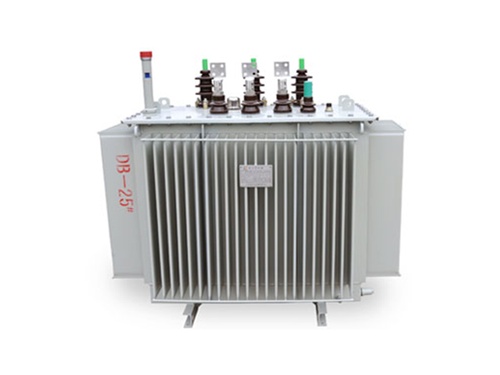

Inquiry

Project Review

Machining

Quality Control

Pass/Fail

Delivery
As a critical piece of equipment in power systems, the safe operation of oil-immersed transformers relies on a multi-layered protection mechanism. Below are the primary protection types for oil-immersed transformers and their functions, categorized by protection targets and functionalities:

I. Electrical Quantity Protections (Direct Monitoring of Electrical Parameters)
1. Buchholz Protection (Gas Protection)
Light Gas Protection: Monitors gas accumulation via a Buchholz relay. Triggers an alarm signal when minor internal faults or oil level drops occur, prompting maintenance personnel to inspect.
Heavy Gas Protection: Activates tripping to rapidly cut off power when severe internal faults (e.g., winding short circuits, core failures) generate significant gas, preventing equipment damage.
Characteristics: Highly sensitive to internal faults, unique to oil-immersed transformers.
2. Differential Protection
Detects internal short-circuit faults (e.g., inter-phase or inter-turn winding shorts) by comparing the vector sums of currents on each side of the transformer.
Advantages: Fast operation speed (typically <30 ms), enabling swift fault isolation to minimize damage.
3. Overcurrent Protection
Definite-Time Overcurrent Protection: Activates after current exceeds rated values for a specified duration, safeguarding against external short circuits or overloads.
Inverse-Time Overcurrent Protection: Reduces tripping time as current increases, better adapting to varying short-circuit current characteristics.
4. Zero-Sequence Current Protection
Targets systems with grounded neutrals, detecting zero-sequence currents from single-phase ground faults to prevent transformer winding damage due to overheating.
5. Overvoltage/Undervoltage Protection
Monitors transformer input voltage and cuts off power via delayed or instantaneous actions when voltage abnormalities (overvoltage or undervoltage) occur, protecting equipment insulation.
II. Non-Electrical Quantity Protections (Monitoring Physical State Changes)
1. Temperature Protection
Oil Temperature Monitoring: Uses thermometers or temperature controllers to monitor top-oil temperature. Triggers alarms when exceeding set thresholds (e.g., 85°C) and trips at critical limits (e.g., 105°C).
Winding Temperature Monitoring: Directly measures winding hotspot temperatures using fiber-optic sensing or thermal simulation techniques to prevent insulation aging from overheating.
2. Pressure Protection
Pressure Relief Valve: Automatically opens to prevent tank rupture when internal faults cause rapid oil pressure increases.
Pressure Surge Protection: Detects sudden oil pressure changes via sensors and rapidly cuts off power for severe internal faults.
3. Oil Level Protection
Monitors oil level gauge readings and triggers alarms when oil levels drop abnormally (e.g., due to leaks), preventing散热 failure or insulation breakdown from insufficient insulating oil.
4. Oil Flow Protection
Used in forced oil-circulation transformers, monitors oil pump flow rates or directions. Trips when oil flow is interrupted or reversed to prevent winding overheating.
III. Special Condition Protections
1. Cooling System Failure Protection
Monitors fan and oil pump operational status. Reduces load or trips to prevent transformer overheating when cooling systems fail.
2. Neutral Point Protection
For ungrounded neutral systems, configures gap protection or zero-sequence voltage protection to prevent overvoltage from single-phase ground faults.
3. Tap Changer Protection
Monitors pressure or gas in the on-load tap changer oil chamber to prevent internal damage from switching failures.
IV. Protection Configuration Examples
| Protection Type | Activation Conditions | Function |
|---|---|---|
| Buchholz Protection | Internal gas accumulation or oil flow surge | Detects internal faults; light gas alarms/heavy gas trips |
| Differential Protection | Imbalance in current vector sums on both sides | Rapidly isolates internal short-circuit faults |
| Overcurrent Protection | Current exceeds rated value for sustained duration | Protects against external short circuits or overloads |
| Temperature Protection | Oil or winding temperature exceeds thresholds | Prevents insulation damage from overheating |
| Pressure Relief Valve | Oil tank internal pressure exceeds set value | Prevents tank explosion |
V. Protection Coordination Principles
Primary and Backup Protections: Buchholz and differential protections serve as primary safeguards, with overcurrent protection as backup, forming multi-layered defense.
Selectivity: Protection action ranges must be clearly defined to avoid cascading trips.
Sensitivity: Timely alarms for minor faults and rapid tripping for severe faults.
Reliability: Regularly calibrate protection devices to ensure accurate operation.
VI. Operation and Maintenance Recommendations
Periodically inspect critical components like Buchholz relays and pressure relief valves to ensure reliable operation.
Combine infrared thermography and partial discharge detection to proactively identify latent faults.
Dynamically adjust protection settings based on transformer load rates and ambient temperatures to enhance adaptability.

The main products include oil immersed transformers, dry-type transformers, power transformers, amorphous alloy transformers, mining transformers, box type substations, high and low voltage switchgear and supporting products
Add: South Head of Mount Huangshan Road, Liaocheng Development Zone, Shandong, China
Email:sdbyqcj@163.com
Tel: +86 13706354419